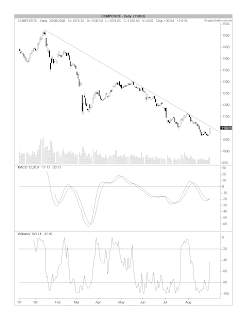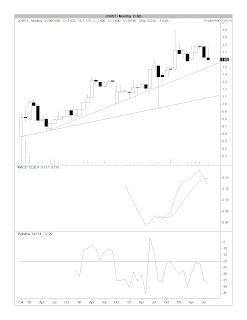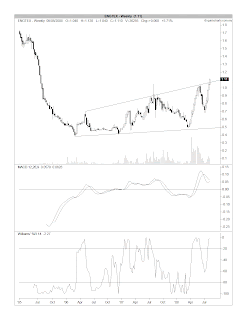NTPM Holdings Bhd ('NTPM') is involved in the manufacture and trading of paper products, such as toilet rolls, tissues, and serviette. The company offers tissue products consisting of facial tissue, toilet paper, kitchen towel rolls, and napkins under the Premier, Royal Gold, and Cutie brand names; and personal care products comprising feminine hygienic products, cotton products, baby diapers, and incontinent products under Intimate, Diapex, and Premier Cotton brand names.
NTPM's financial performance has been improving steadily in the past two years. From the table below, we can see that NTPM's net profit for the past 4 quarters has increased by 5.8% to RM34.1 million from RM32.2 million in the preceding 4 quarters. Turnover for the same periods has increased by 13.1% from RM270.7 million to RM306.2 million.

Based on its closing price of RM0.53 yesterday, NTPM is trading at a PE of 9.8 times (based on its EPS of 5.4 sen fro the past 4 quarters) or at a P/Book of 1.9 times (based on its NTA per share of 29 sen as at 31/3/2008). At these multiples, NTPM may be considered fairly valued, with limited upside.
From the chart below, NTPM share price has been consolidating one & half year. A breakout above RM0.50-52 could see the share price moving higher to a target of RM0.60-65. While its closing price yesterday is above this breakout level, the "breakout" was not accompanied with a convincing volume.
 Chart: NTPM's weekly chart as at August 4th (source: Quickcharts)
Chart: NTPM's weekly chart as at August 4th (source: Quickcharts)Based on the potential bullish breakout, NTPM could be a trading BUY. This breakout needs to recruit further support over the next few days, failing which it could turn into a bull trap. A similar breakout was noted previously (go
here), where the stock moved from RM0.36 to RM0.50 in Jan-Feb 2007. Could the same happen again?

















































